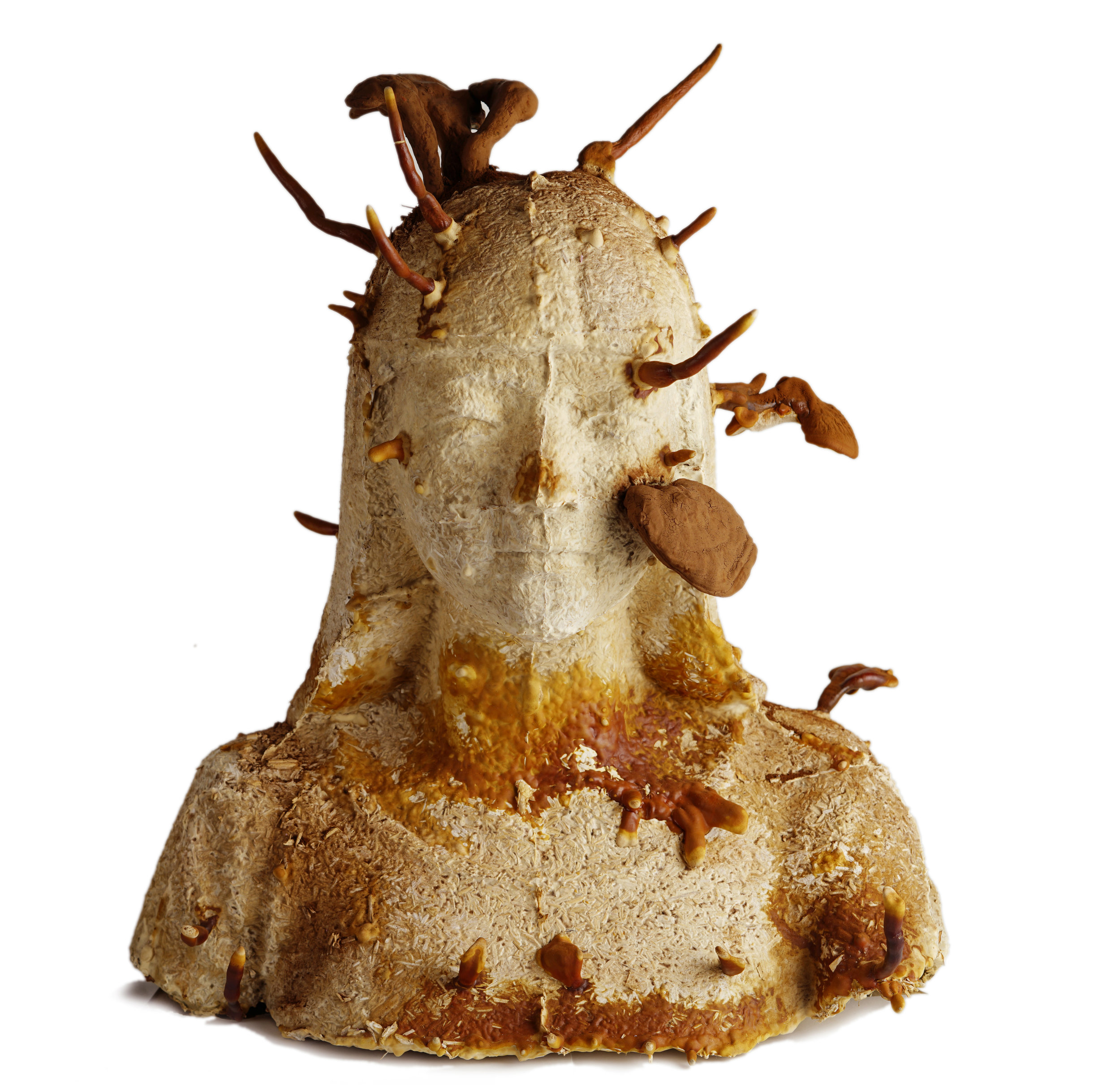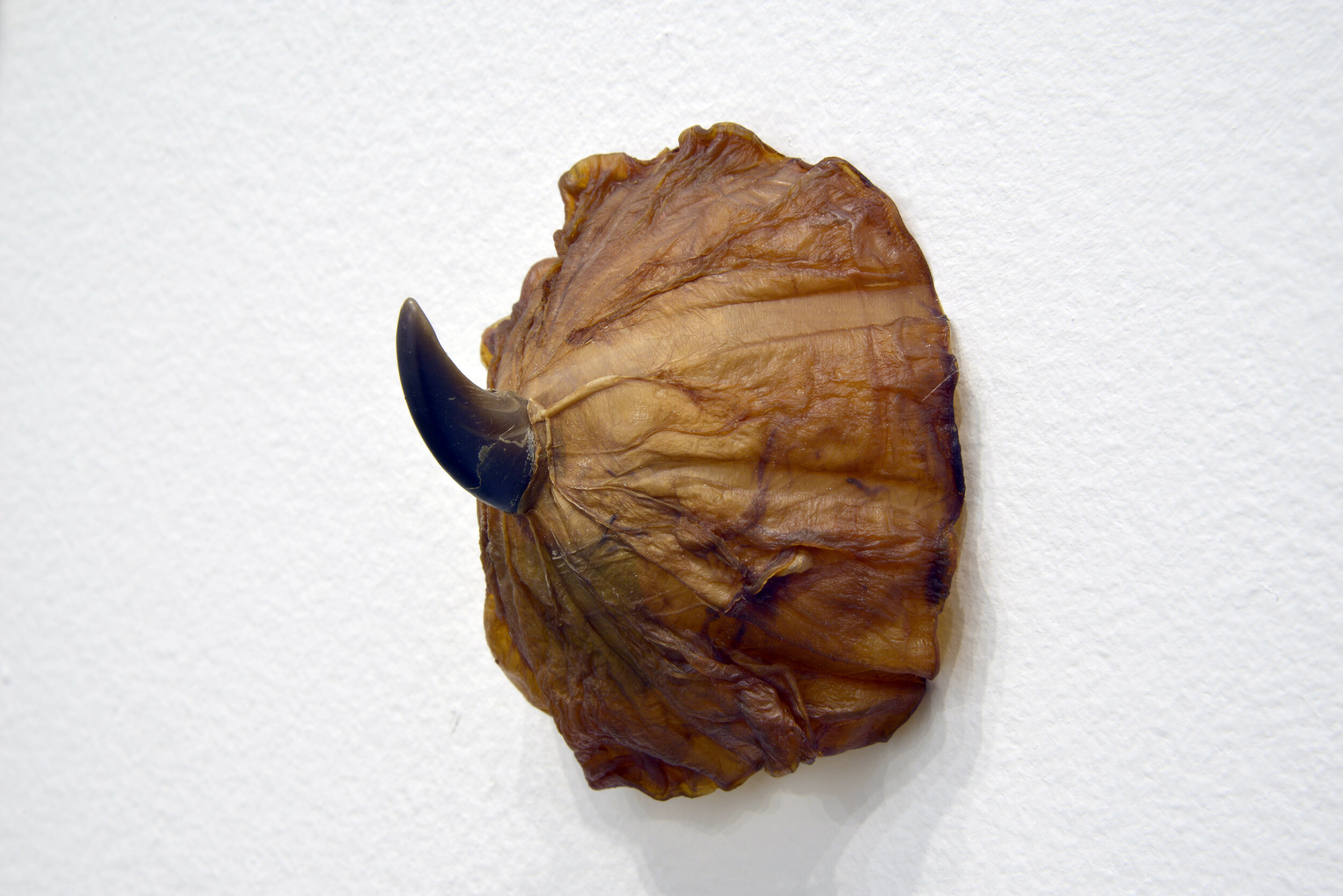Yan Xiaojung, Lingzhi Girl IV, cultivated lingzhi mushrooms and wood chips, 2016-20. Photo: courtesy of the artist.
Artists ↑
Radha Chaddah, Nicole Clouston, Heather Komus, Yan Xiaojing, and Jay White
The “natural” world ↑
by Jennifer Matotek, Director/Curator
The word "culture" grew from the Latin word ‘colere’ – a term meaning to tend to the earth. The word then evolved to refer to cultivation, and actively fostering growth. Culture’s land-based meaning later developed to encompass a scientific meaning – a group of growing cells (potentially bacteria) – as well as a social meaning, referring to the customs that characterize a specific group.
Ideas around the meanings of culture, particularly social or biological growth, link the artworks in The Experiment. At some point during each work’s creation, artists left the pieces to develop according to the laws of nature without intervention, inviting experimentation and collaboration with the natural world.
Chinese-born Ontario-based artist Xiaojing Yan embraces the multiple meanings of culture in her work. Yan exhibits two bodies of work in The Experiment that feature growths of lingzhi mushrooms. Lingzhi mushrooms have a significant meaning in Chinese culture, as a material used in traditional medicine and referenced in mythology and religion. For the sculptures Lingzhi Girls, Yan planted mushroom spores inside moulds which were exposed to moisture, fostering the growth of networks of mycelium (mushroom roots) that then grew into mushrooms on identical busts of the artist. The unique mushroom growths become the distinguishing feature of each work, with the identical nature of the busts referencing China’s mass cultural production. In Far from where you divined, lingzhi mushrooms grow from sculptural symbols of Chinese cultural significance – the deer, revered for its skill at finding sacred mushrooms; and the rabbit, a symbol of longevity. The mushroom represents natural matter that adapts, self-organizes, and regenerates in response to ecological conditions.
Winnipeg artist Heather Komus collects organic matter from wild cucumbers to fish flies to create sculptures and installations utilizing sculptural, textile, and embroidery techniques. Gust of Gametes and Free-Floating investigate plant and human reproduction as well as symbiosis, encouraging viewers to view, close up, natural materials which share visual connections and properties. Memory and Matter, made from mushrooms like Yan’s works, was created after Komus witnessed an autopsy. During the autopsy and reviewing other human brains, Komus where she marveled at their material variations, and began thinking about how the way in which brain cells communicate with the body is similar to the functions of mushrooms and their spores.
Toronto-based visual artist and scientist Radha Chaddah’s photographic series Exodus features neural stem cells grown from human skin. Working with cell biologists, Chaddah grew transformed cells in a petri dish, feeding them a liquid diet, and infusing them with fluorescent antibodies to better visualize their colourfully stained anatomy. In an artist statement about the work, Chaddah notes that Exodus considers the rise of science as religion, as both “seek knowledge of the universe by different means: reason and empiricism, versus revelation and faith.” Chaddah sees parallels between the creation and depiction of the novel colonies of her transformed cells and the story of Exodus, where a new world is remade by the hand of man.
Toronto-based Nicole Clouston hypothesizes that if humanity better acknowledged our connection to microbes – living bacterial communities invisible to the naked eye that pass in and out of our bodies – we might foster a more sustainable relationship with our ecosystem. Clouston seeks to remind viewers what bodies share with microbial communities by creating living portraits of water and land, harvesting mud and water and placing them in clear acrylic prisms. When exposed to light and provided nutrients, the microbes in the mud start to flourish. For Regina, Clouston creates a site-specific portrait of Wascana Lake in Dunlop’s Central Gallery, highlighting its splendor as a complex ecosystem sustained by a myriad of organic and inorganic elements.
The Experiment questions where the artifice of the artist’s hand ends and the natural world begins, tying to conversations around nature and the environment as well as debates around labour. The artists share an understanding that the human body and nature are a connected ecosystem, rejecting the notion of the body as a singular, sealed organism. The artworks remind viewers of the existence of entities that are larger and more powerful then human forces. The Experiment encourages viewers to look more closely, and think more deeply, about the natural world and humanity’s relationship to it.
Installation Images ↑
Photos by Don Hall.














